Saucony Peregrine 14 Review (2024): Versatile Trail Shoes for All?
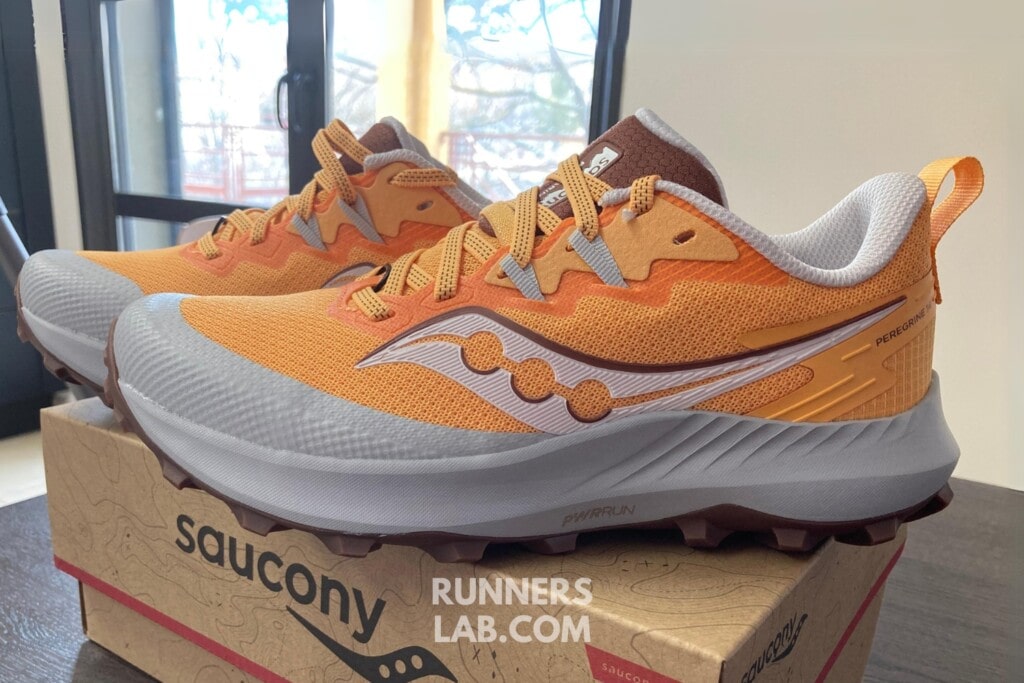
The Peregrine 14 is Saucony’s longest standing trail shoe that’s been hailed for its versatility and reliability year-on-year. With a few changes with every new model, the Peregrine has done no wrong, often topping the charts for short to middle distance running on all types of trails.
Trying out the 14th iteration was my first experience of Saucony on the trails (after really loving their road shoes). It did not disappoint! The combination of comfort, stability, grip and looks is almost perfect with this shoe and I expect it to become one of my staples for long runs as well as shorter training runs, too.
But is it worth upgrading your favorite Peregrine 13s? Should beginners trust the Peregrine for increasing their off-road mileage? What’s great and what’s not so great about the new Saucony Peregrine 14? Read on to find out if these shoes are for you based on my extensive testing.
Why trust me?
I’m an ultramarathon runner who completed many iconic races like the Ultra Trail du Mont Blanc (UTMB). I’m passionate about the mountains and spend as much time as possible outdoors. I have experience with many trail running shoe brands and I’m always excited to put new models through the test.
For this review, I was able to run with the Peregrine on my usual trails in the Pyrenees as part of my daily training. I tested the shoes on various types of workouts including speed sessions and long runs on technical surfaces with steep elevation gain.

What You Need to Know
A fantastic all-arounder with an excellent grip.
The Saucony Peregrine 14 upgrades an already stellar trail running shoe with improvements to the upper and midsole designed to increase comfort and durability. Fans of the brand will continue to appreciate the amazing 5mm deep lugs that provide fantastic grip on all types of terrain, as well as a general sturdy, comfortable feel.
Featuring a 4mm drop, the Peregrine 14 is designed for short to middle distances, rugged terrain, and faster running. However, the PWRRUN midsole and PWRRUN+ sockliner also make them comfortable for longer runs and for harder packed trails.
Although not as breathable or lightweight as the ideal trail shoe would be, the Peregrine 14 are excellent all-arounders for training and racing, delivering comfort and reliability while also being vegan and made with recycled materials.
PROS
- Great grip on all terrain
- Soft and comfortable upper
- Good cushioning and support
- Good protection from trail debris
CONS
- Slight lack of breathability
- A few potential durability issues (notably the exposed foam under the heel)
Grip

Reliable traction has been synonymous with the Peregrine for years. Saucony uses a PWRTRAC outsole made from excellent-quality rubber that strikes the right balance of comfort and stability on the trails. Add to this 5 mm lugs that have successfully carried me up muddy tracks, and you’ve got a great combination for traction and speed on all surfaces.
Overall, I found these shoes flexible and soft, with a good amount of ground feel that allowed me to feel stable enough up and down hills and on tricky terrain.
Terrains
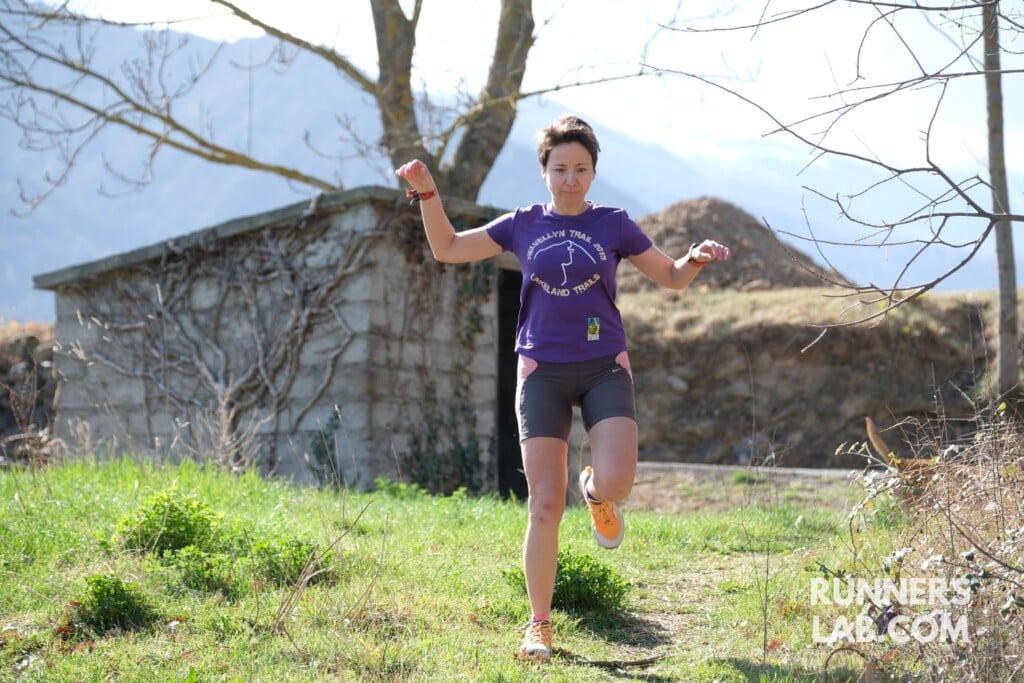
Running on hard packed trails, the outsole and midsole together combine to soften landings and feel comfortable for longer days out. The Saucony Peregrine 14 felt reliable and reduced impact on rocks and harder surfaces, without weighing me down too much.
I also loved running in these shoes through mud and on softer ground and grass. The Peregrines shed the mud across the softer, sandier, and wet ground as I went along. I think this is key for performance in wet conditions since it allows your running shoes to stay lighter and your feet to keep moving flexibly.
While those running in extremely muddy and wet weather may want trail running shoes with deeper lugs, the Peregrine 14 are perfect for all-around grip in most backcountry settings.
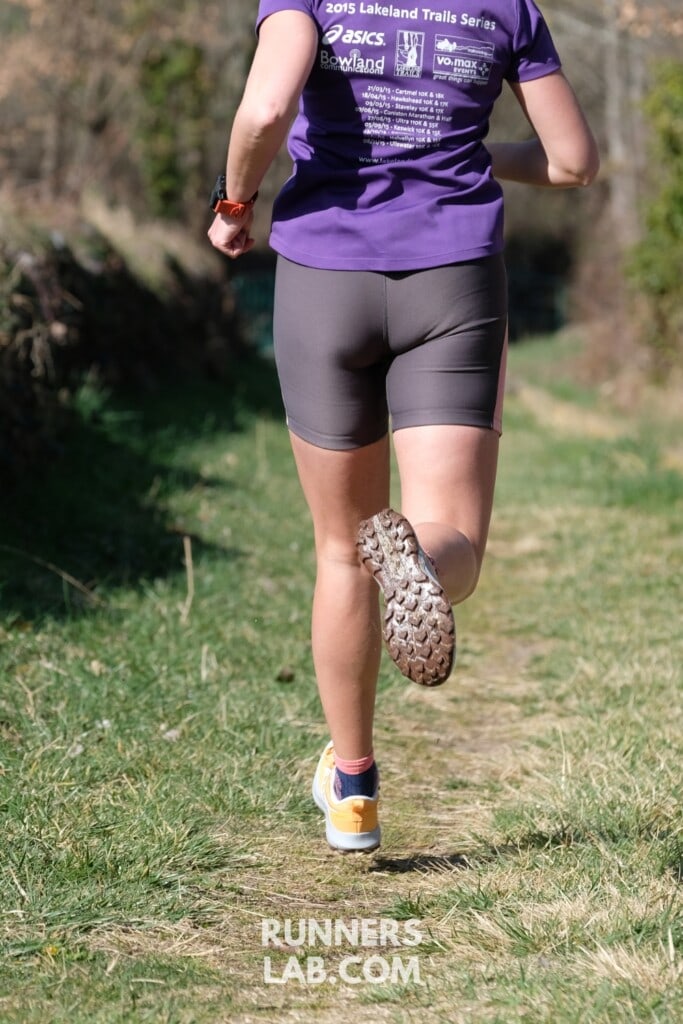
The only concern with the outsole design is the exposed foam section through the middle of the heel. A few runners report it becoming damaged quite soon after running on technical terrain and wearing out quickly, which reduces my confidence in the shoes’ durability. I haven’t had this negative experience yet, but I will keep an eye on it.
Cushioning
The moment I stepped into the Peregrine 14s, I was impressed with how comfortable they felt. The signature PWRRUN foam is soft, springy, and offers shock protection on hard landings. The upgraded upper and the plush heel collar also make these shoes absolutely fantastic to run in.

I was initially skeptical of the heel to toe drop – the classic Peregrine 4 mm, which long-time users will be familiar with. I generally avoid footwear with less than a 6 mm drop to protect my Achilles tendon and calf muscles, but overall, the Peregrines seem to get away with it. However, it’s something to be aware of if you have sensitive tendons and calves.
The stack is 28 mm at the heel with 24 mm under the front of the foot. This is a nice amount of trail protection without making the shoe feel clunky. There’s also a rock plate positioned under the midsole – an added bonus on rocky paths.
Now, the weight: this could be a dealbreaker for those looking for super light and nimble shoes, but I found that 241 g/8.5 oz for women’s EU size 38.5 felt just right. I do have lighter shoes, but I would confidently prefer these for longer distance comfort. For reference, women’s size 40 weighs 253 g/8.9 oz and men’s size 42 weighs 266 g/9.4 oz. A standard weight for versatile trail shoes.
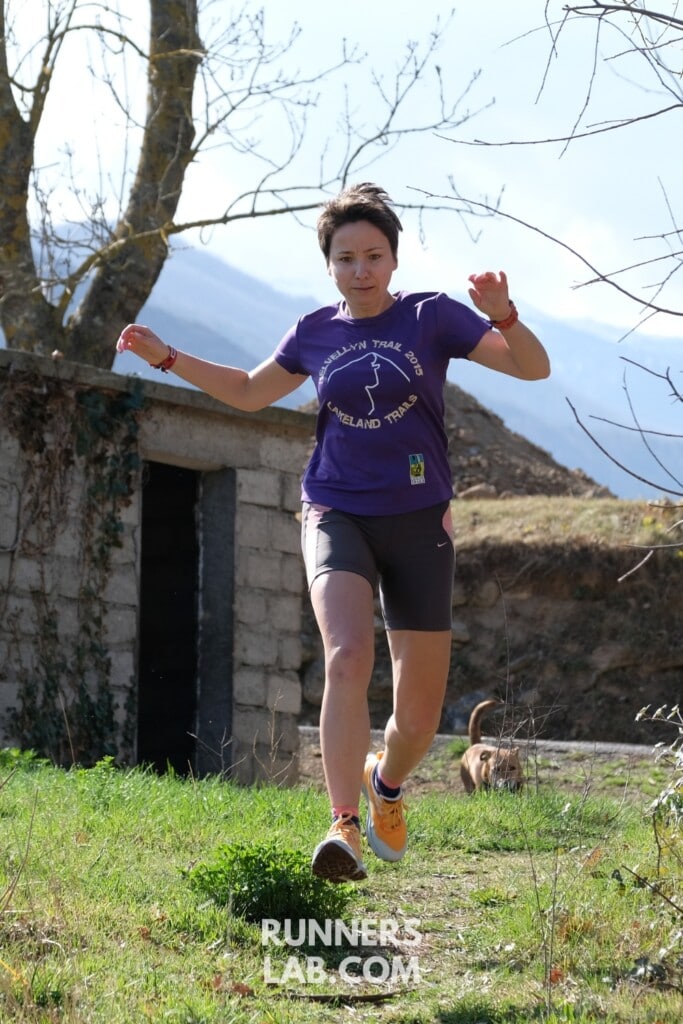
Energy Return
For an everyday training shoe, the Peregrine 14 gives just enough bounce to keep your runs dynamic but not super speedy. There is no particular push-off design or rocker, and the combination of soft cushioning and overall stability show that these shoes are built primarily for comfort and shock absorption.
The PWRRUN+ sockliner is softer and bouncier than the midsole foam, however, which does help create a good balance that I found very pleasant on short to medium runs.
Foot Lockdown
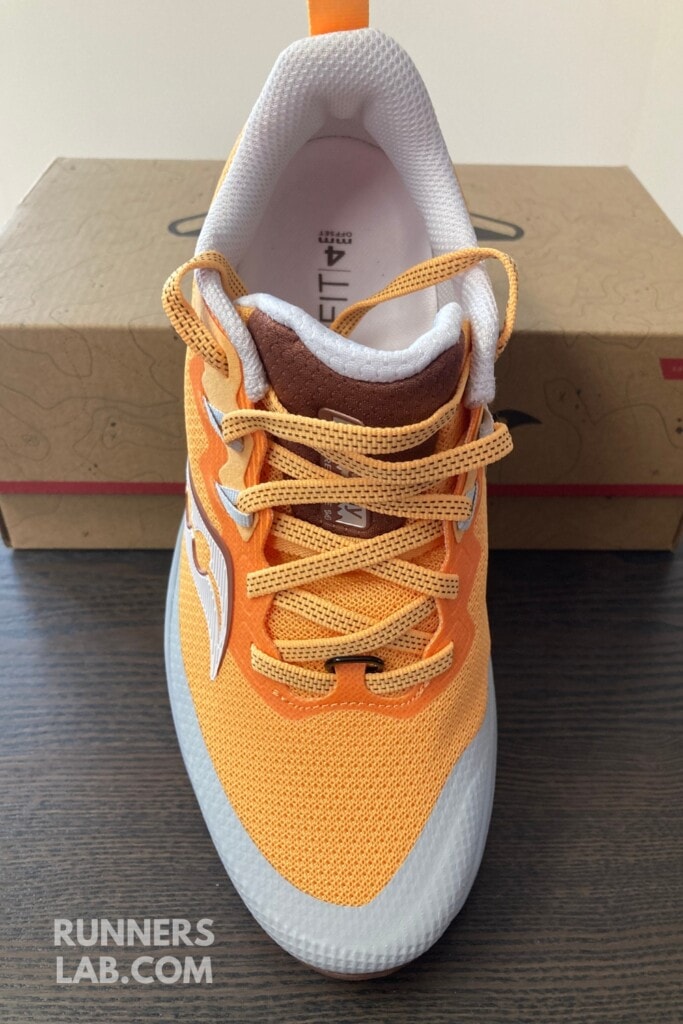
The biggest changes from the Peregrine 13 are noticeable in the 14’s new upper. The tongue is more comfortable than the previous version, and the forefoot has a plush and protective cover that feels great from the moment you put the shoes on. The new design is also more effective at protecting the feet from trail debris.
The Peregrine 14 features a pretty solid toe bumper, which helped me kick a few rocks without feeling any pain in my toes. The toe box feels roomy. I also like the fact that laces can be stowed away under a small elastic over the front of the foot. This keeps them from flapping about and, more importantly, getting caught in small branches on the trail.
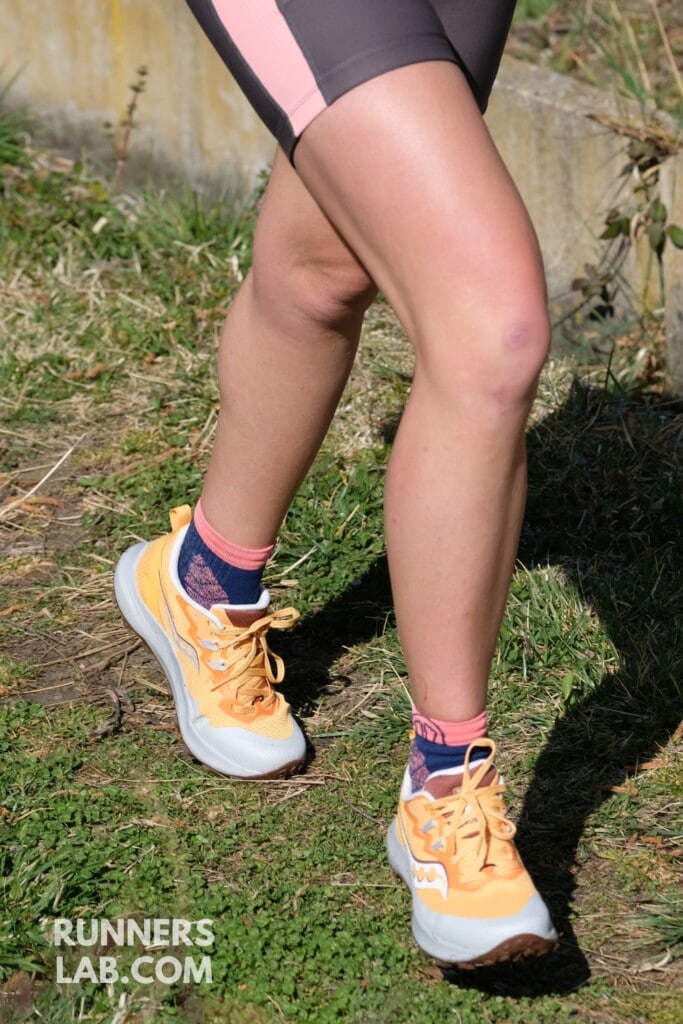
One downside of the plush, thick tongue and upper is that these shoes were not as breathable as I would have liked on longer runs. My feet actually got warm quickly in them, which is probably good in cold weather.
Fit and sizing
I tested the Peregrines in my usual long-distance size, and they felt true to size and secure. Foot lockdown was equal parts comfortable and tight, without the laces digging into the forefoot.
The sockliner contributes to the excellent lockdown for the latest version of the Peregrine.
Finally, it’s worth mentioning that some retailers stock the Peregrine in wider sizes if you’re particularly concerned about comfort from that point of view. However, with the great lockdown, it’s probably a safe bet to size up half or a full size for wider feet.
Use
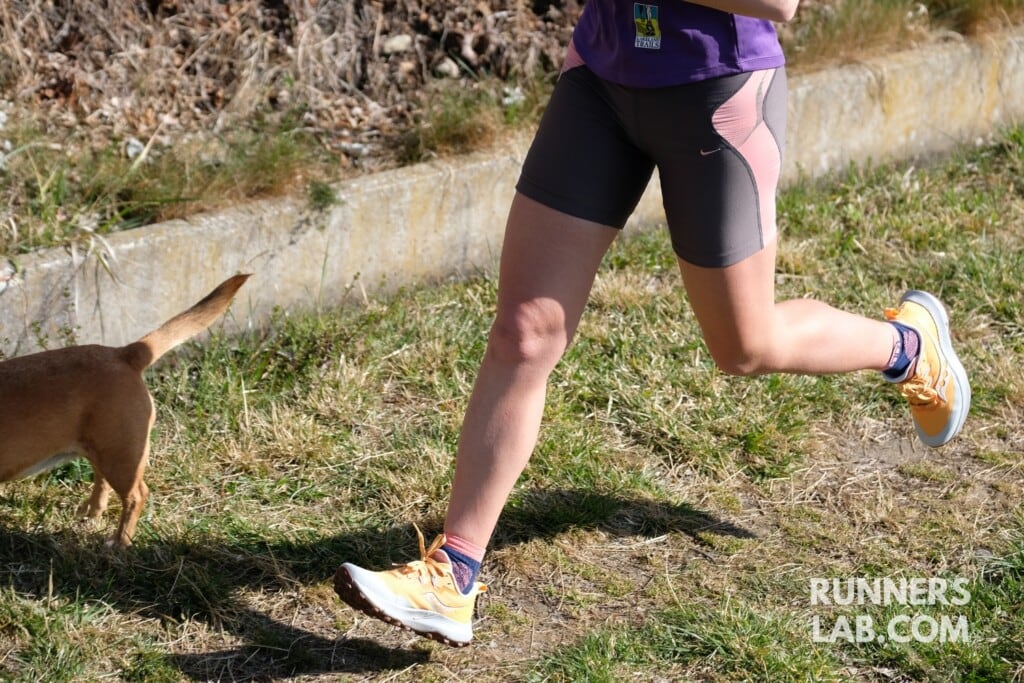
The Saucony Peregrine 14 excels on all types of trails and provides great grip, especially uphill, thanks to the chevron style lugs. It’s also equally comfortable on harder packed trails and gravel, thanks to the PWRRUN midsole that ensures soft landings.
Saucony states that it has updated the midsole to keep it more comfortable for longer distances. Added to the slightly higher stack, these bodes well for lacing up the Peregrine 14 for runs up to 20-30 km/12-19 mi – in training and for races of up to about 50 km/31 mi.
Value and Sustainability
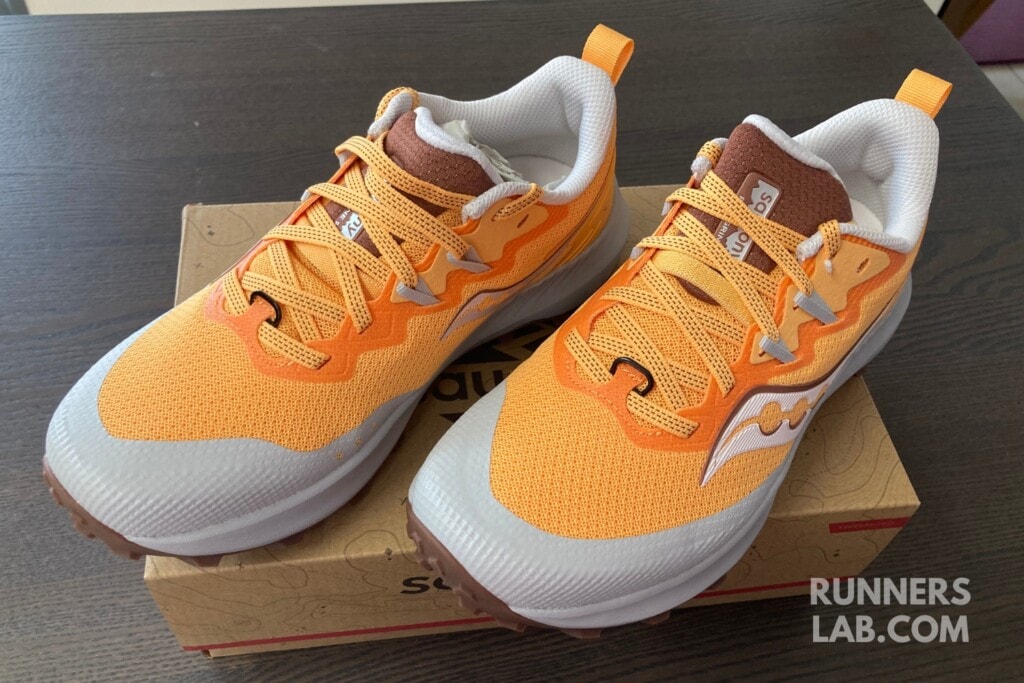
From a durability point of view, the Saucony Peregrine 14 has improved on the upper in order to withstand trail obstacles better. However, there are some fragile sections, like the exposed foam in the heel, which could present an issue for their longevity.
At the same time, you can often find the Peregrines on sale, and they represent good value for money at $140. Their versatility and nimbleness make them a great all-arounder and even racing shoe for trail beginners, which increases their value even further.
Saucony declares the Peregrine 14 to be vegan and made with recycled materials. However, we don’t know any specific details in terms of the percentage of recycled elements.
Saucony Peregrine 13 vs 14 Recap
In this latest iteration of the Peregrine, Saucony has made improvements to the upper, to make it more durable and protective. The redesigned sockliner offers better protection from debris. The tongue is also softer and thicker, making the forefoot more comfortable, but also adding a bit of weight and keeping feet quite warm.
Many reviews also find the Peregrine 14’s slight increase in stack and snappier full bed of PWRRUN foam to improve its responsiveness. Overall, however, the two versions are pretty similar, so if there are miles left in your Peregrine 13, there’s no rush to upgrade right away.
Conclusion

As with previous versions, the Saucony Peregrine 14 represents good value for money, all-around great trail performance from a shoe that’s lightweight enough for beginners or those looking for extra comfort on all terrain. While it’s not the most responsive or dynamic pair of trail running shoes, it can be used in pretty much any conditions and on all terrains, offering reliable grip, good lockdown, and excellent comfort and cushioning levels.
Facts
Technical Specs
| Terrain | Trail |
| Pronation type | Neutral |
| Drop | 4 mm |
| Heel height | 28 mm |
| Forefoot height | 24 mm |
| Lugs | 5 mm |
| Weight (men) | 266 g/9.4 oz |
| Weight (women) | 241 g/8.5 oz |
| Features | Available in GTX, Vegan, Recycled materials, Toe bumper, Rock plate |
| Athletes | |
| Release year | 2024 |
Cushioning
| Softness | Soft |
| Responsiveness | Medium |
Technologies
| Outsole | PWRTRAC rubber |
| Midsole | PWRRUN, PWRRUN+ sock liner |
| Upper | Engineered Mesh |
Use
| Speed | Slow, Moderate |
| Distance | Short, Mid, Long |
| Workout | Daily running |
Did you know?
Since 2017, we have analyzed hundreds of trail running shoes, and thousands of runners trust us to find the perfect pair every month!
Discover our selection of the best trail shoes.

